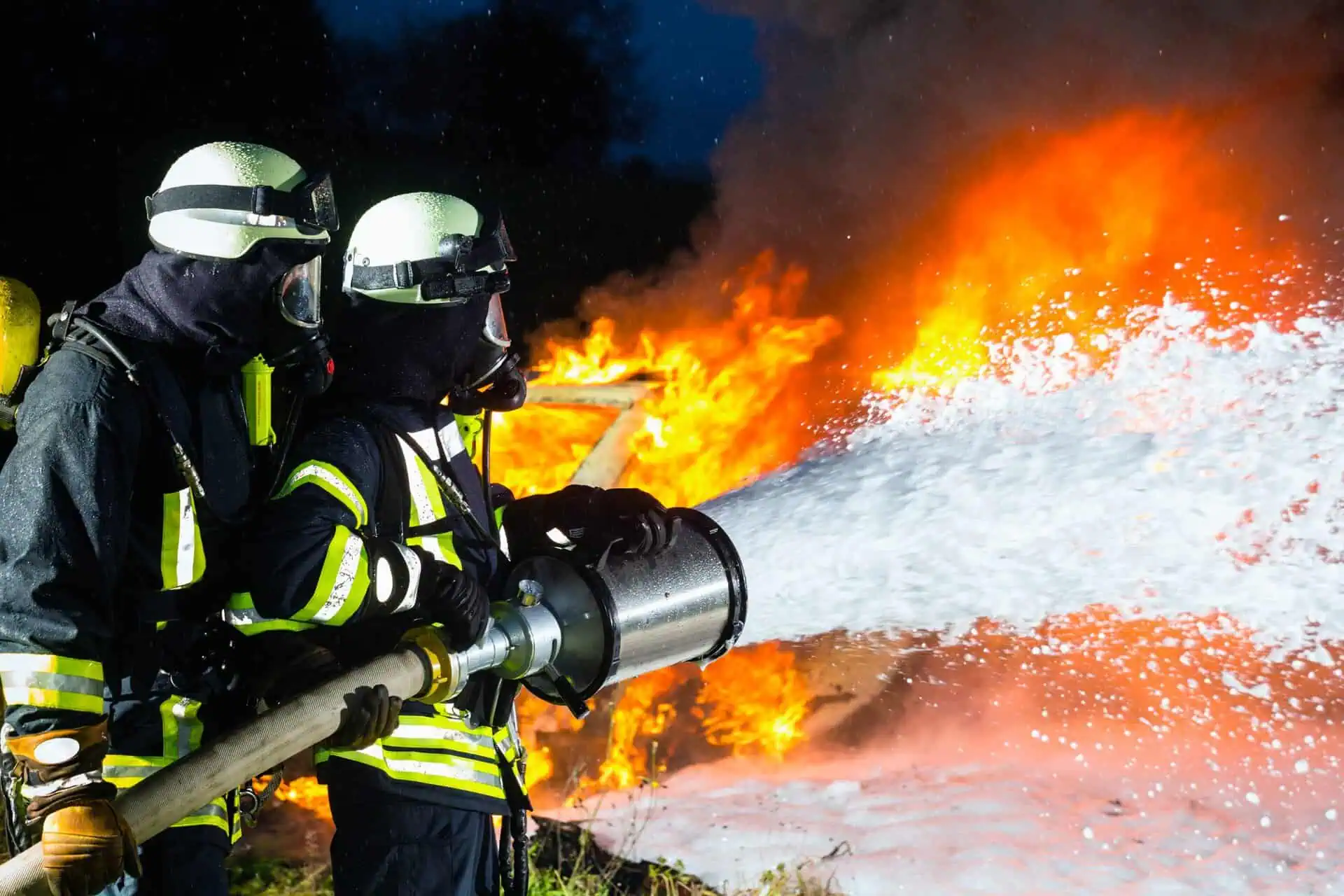FAQ: What Firefighting Foam Has PFAS Chemicals?
- Last Updated: July 14th, 2025

Attorney Jessica Paluch-Hoerman, founder of TruLaw, has over 28 years of experience as a personal injury and mass tort attorney, and previously worked as an international tax attorney at Deloitte. Jessie collaborates with attorneys nationwide — enabling her to share reliable, up-to-date legal information with our readers.
Legally Reviewed
This article has been written and reviewed for legal accuracy and clarity by the team of writers and legal experts at TruLaw and is as accurate as possible. This content should not be taken as legal advice from an attorney. If you would like to learn more about our owner and experienced injury lawyer, Jessie Paluch, you can do so here.
Fact-Checked
TruLaw does everything possible to make sure the information in this article is up to date and accurate. If you need specific legal advice about your case, contact us by using the chat on the bottom of this page. This article should not be taken as advice from an attorney.
Key takeaways:
- PFAS chemicals are commonly found in certain types of firefighting foams, particularly aqueous film-forming foams (AFFF).
- Identifying PFAS-containing firefighting foams is essential for addressing environmental and health concerns.
- Transitioning to fluorine-free foams is an essential step towards reducing PFAS contamination.
What Firefighting Foam Has PFAS Chemicals? Let's Discuss
Question: “What firefighting foam has PFAS chemicals?“
Answer: The most common firefighting foams that contain PFAS chemicals are aqueous film-forming foams (AFFF). Due to their effectiveness, these foams have been widely used for extinguishing flammable liquid fires. However, their PFAS contamination has led to environmental and health concerns.
On this page, we’ll discuss this question in further depth, risks associated with PFAS foams, impacts of PFAS on Fire Departments and much more.
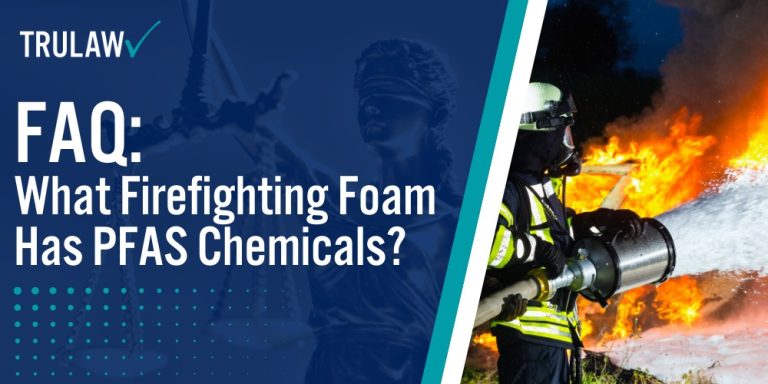
Intro to Firefighting Foams with PFAS
Firefighting foams are necessary tools for combating fires, especially those involving flammable liquids and vapors.
PFAS-containing firefighting foams have been particularly effective due to their ability to quickly suppress fires and prevent re-ignition.
However, the environmental and health impacts of these foams have come under scrutiny.
Key factors influencing the use of PFAS-containing foams include:
- The effectiveness of aqueous film forming foams in suppressing fires.
- Long-term environmental contamination is caused by PFAS substances.
- The potential health risks associated with exposure to PFAS chemicals.
If you or a loved one has developed cancer or other severe health conditions after being exposed to AFFF firefighting foam, you may be eligible for compensation.
Contact TruLaw using the chat on this page to receive an instant case evaluation and see if you qualify to file an AFFF lawsuit today.
Table of Contents
Understanding PFAS in Firefighting Foam
PFAS chemicals are essential in some firefighting foams, enhancing their effectiveness at extinguishing fires.
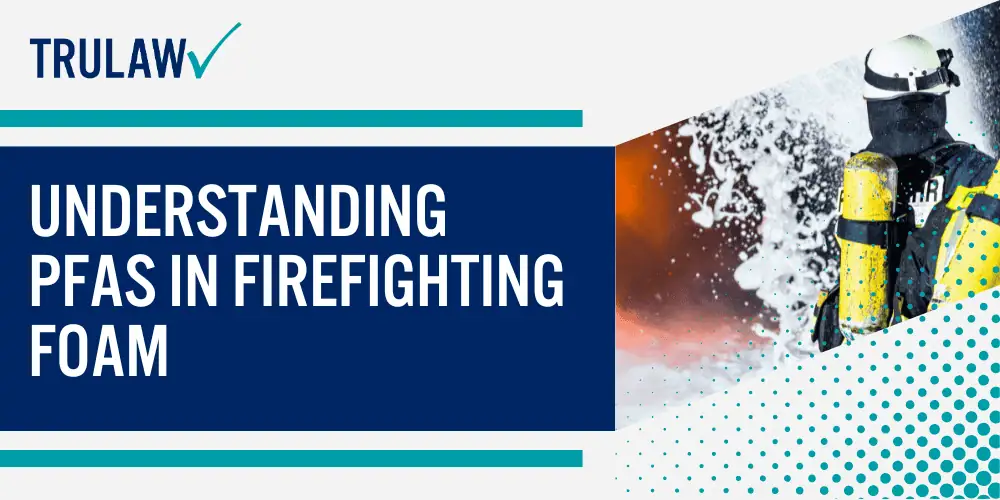
This section explores PFAS chemicals, their role in firefighting foams, and a specific type of foam known as Aqueous Film Forming Foam (AFFF).
What Are PFAS Chemicals?
Polyfluoroalkyl Substances (PFAS) are a group of over 9,000 synthetic chemicals widely used in various industries.
These chemicals are known for resisting heat, water, and oil.
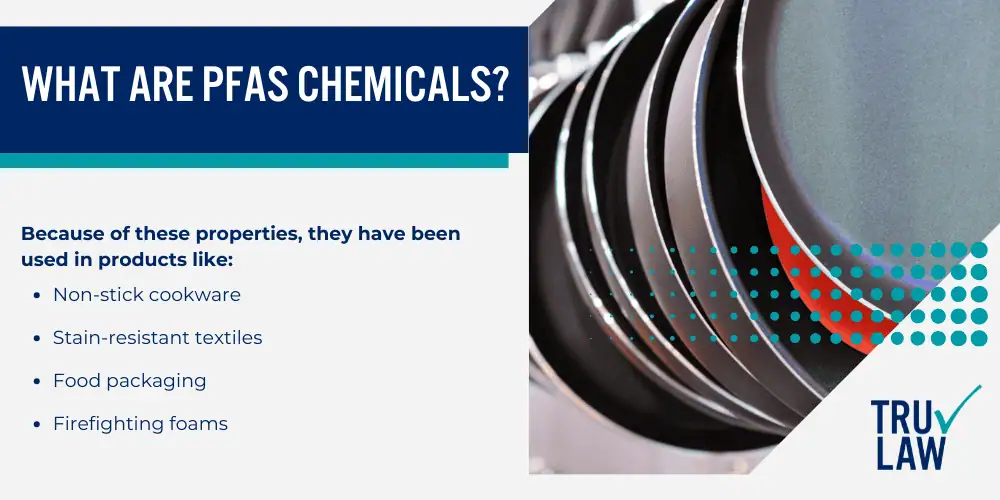
Because of these properties, they have been used in products like:
- Non-stick cookware
- Stain-resistant textiles
- Food packaging
- Firefighting foams
PFAS compounds are stable and persist in the environment, leading to the nickname “forever chemicals.”
Studies have linked them to health issues such as cancer, liver damage, and developmental problems in infants.
The Role of PFAS in Firefighting Foams
PFAS-containing foams play a significant role in firefighting, especially when dealing with flammable liquids.
These foams create a barrier between the fire and the fuel, preventing the release of flammable vapors.
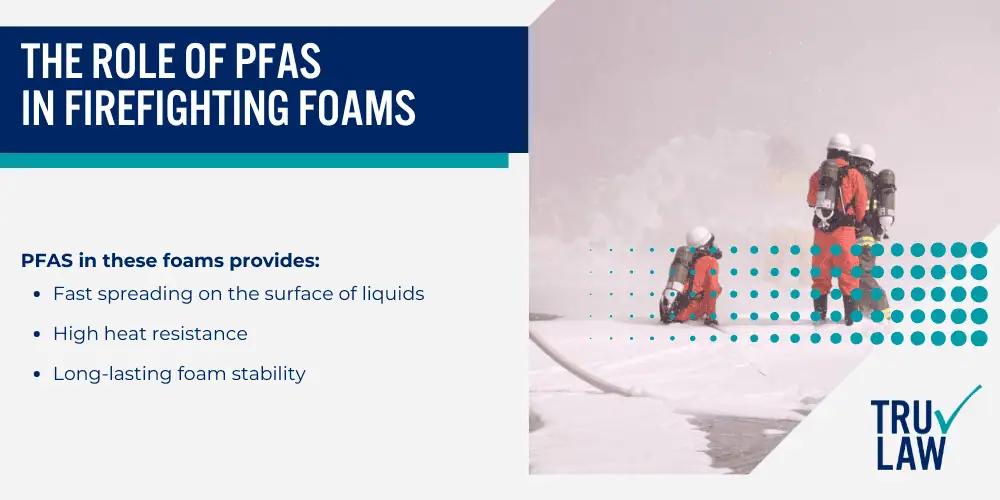
PFAS in these foams provides:
- Fast spreading on the surface of liquids
- High heat resistance
- Long-lasting foam stability
These properties make PFAS foams suitable for high-risk environments, such as military bases and airports.
Their effectiveness in suppressing jet fuel fires is unparalleled, though their environmental and health impacts have raised concerns among scientists and regulatory bodies.
Aqueous Film Forming Foam (AFFF)
Aqueous Film Forming Foam (AFFF) is a type of firefighting foam that includes PFAS chemicals.
It has been widely used for decades, particularly in situations involving liquid fuel fires.
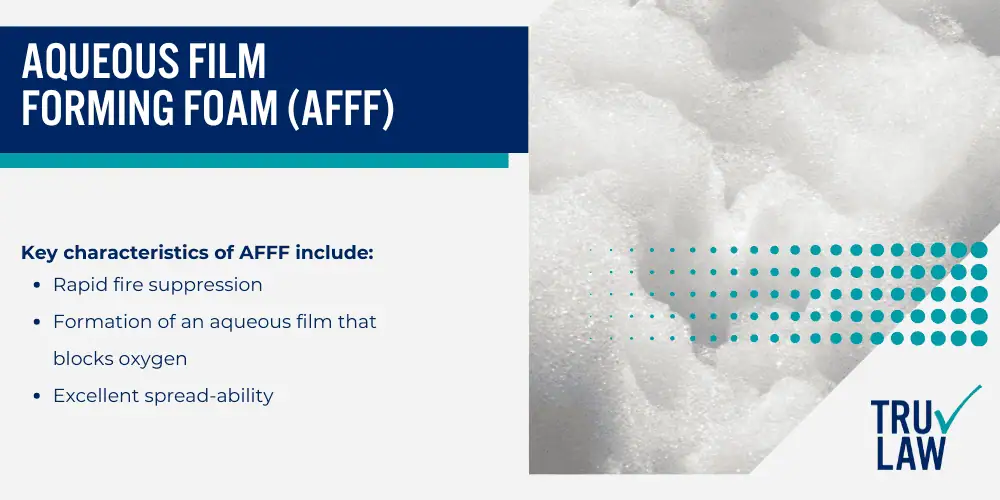
Key characteristics of AFFF include:
- Rapid fire suppression
- Formation of an aqueous film that blocks oxygen
- Excellent spread-ability
Despite its effectiveness, AFFF has been linked to environmental pollution and health risks.
The U.S. Department of Defense is working on phasing out PFAS-containing AFFF in favor of safer alternatives.
Measures to replace or remediate PFAS-contaminated sites are also in progress, reflecting increasing awareness and regulatory action against PFAS.
Types of Firefighting Foams and PFAS
Firefighting foams are critical for combating fires involving flammable liquids.
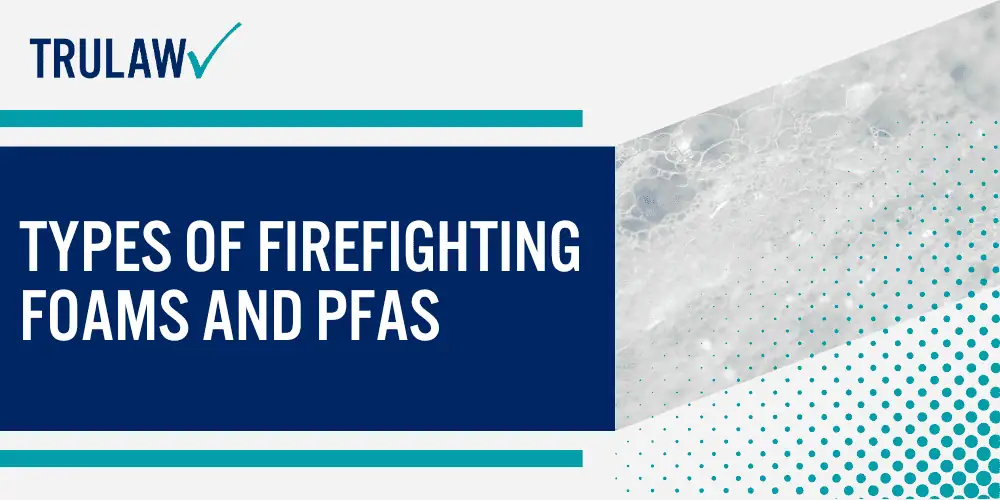
Some foams contain PFAS chemicals, while others are PFAS-free alternatives.
Class B Foams and PFAS Content
Class B foams are used to extinguish fires involving flammable liquids like gasoline, oil, and jet fuel.
These foams are usually referred to as Aqueous Film Forming Foam (AFFF).
A key characteristic of these foams is the presence of PFAS chemicals.
PFAS (Per- and Polyfluoroalkyl Substances) are heat-resistant chemicals.
They help form a film on the surface of a liquid fuel fire, effectively cutting off the oxygen supply and extinguishing the flame.
AFFF is highly effective but has environmental drawbacks due to its PFAS content.
PFAS can contaminate drinking water and pose health risks.
Key points about Class B foams:
- Used for flammable liquid fires.
- Known as AFFF.
- Contains PFAS chemicals.
- Creates a film to smother fires.
- Environmental concerns due to contamination potential.
PFAS-Free Foams: Alternatives to AFFF
Due to environmental concerns, there has been a shift towards PFAS-free firefighting foams.
These are sometimes called Fluorine Free Foams.
PFAS-free foams do not contain the harmful PFAS chemicals found in AFFF, but they still need to be effective in fighting liquid fuel fires.
Several brands and types of Fluorine-Free Foams are available.
These PFAS-free firefighting foams use different chemical formulations that are not harmful to the environment but may not always match the exact performance of traditional AFFF.
They are designed to comply with new regulatory standards for firefighting foams in environments like airports and military installations.
Key points about PFAS-Free Foams:
- Also known as Fluorine Free Foam.
- Do not contain PFAS chemicals.
- Seek to match the effectiveness of AFFF.
- Better for the environment.
- Compliant with newer regulations and standards.
By understanding Class B firefighting foams and the available Fluorine-Free alternatives, it is possible to choose the best foam for specific fire risks while minimizing environmental impact.
Risks Associated with PFAS Foams
While effective in firefighting, PFAS foams carry several risks related to human health and the environment.
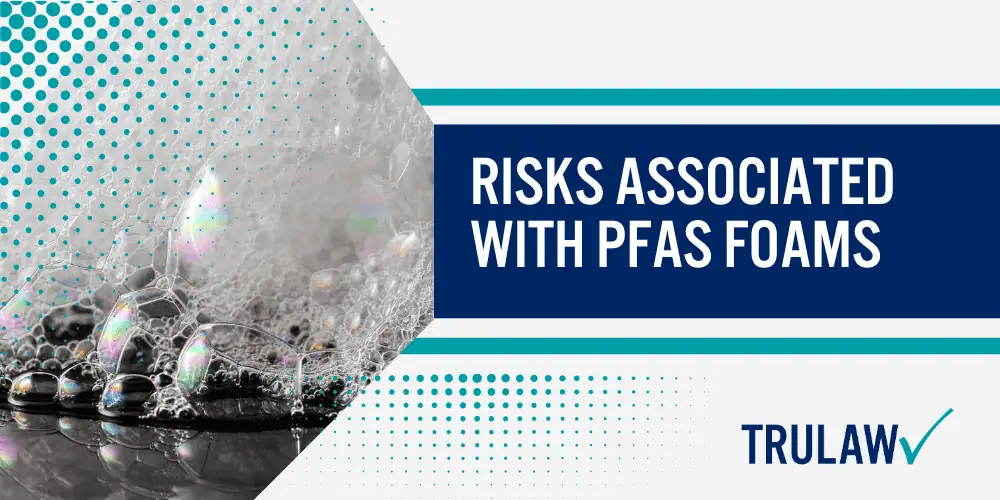
The following subsections illustrate these risks in further detail.
Health and Environmental Risks
Health risks associated with PFAS foams are significant.
PFAS, often called “forever chemicals,” accumulate in the human body over time and do not break down easily.
This can lead to a variety of health issues.
Possible health effects include:
- Cancer: Studies have linked PFAS exposure to cancers such as kidney and testicular cancer.
- Immune System Suppression: PFAS can weaken the immune system, reducing the body’s ability to combat illnesses.
- Hormonal Disruption: These chemicals can interfere with hormone functions, affecting growth and development.
- Liver Damage: Exposure can lead to liver issues, including elevated enzyme levels, indicating liver stress.
Environmental risks are also alarming.
PFAS can persist in the environment for decades, contaminating soil and water and affecting wildlife and ecosystems.
Environmental effects might include:
- Water Pollution: PFAS can seep into groundwater, making it difficult to remove.
- Soil Contamination: Once in the soil, these chemicals can spread to plants and animals.
- Bioaccumulation: Wildlife can ingest PFAS, leading to long-term health issues.
- Ecosystem Disruption: Over time, the presence of PFAS can affect the balance of various ecosystems.
PFAS Contamination in Water
PFAS contamination in drinking water is one of the most critical issues.
These chemicals can leach into water supplies from firefighting foams used over the years, posing direct risks to human health.
Important points to consider are:
- Widespread Presence: Nearly 700 military bases have reported known or suspected PFAS contamination.
- Health Regulations: Drinking water affected by PFAS may not always meet health safety standards.
- Treatment Systems: Addressing contamination often requires costly water treatment systems.
- Bottled Water Supplies: In some cases, affected communities rely on bottled water for clean drinking water.
- Community Impact: Prolonged exposure can result in widespread health problems and stress in affected areas.
Efforts to mitigate contamination include providing clean water and ongoing environmental investigations.
It’s crucial to manage and reduce PFAS levels to protect both human health and the environment.
Regulatory Perspective on PFAS in Foam
The use of PFAS in firefighting foam has sparked significant attention due to its potential health risks and environmental impact.
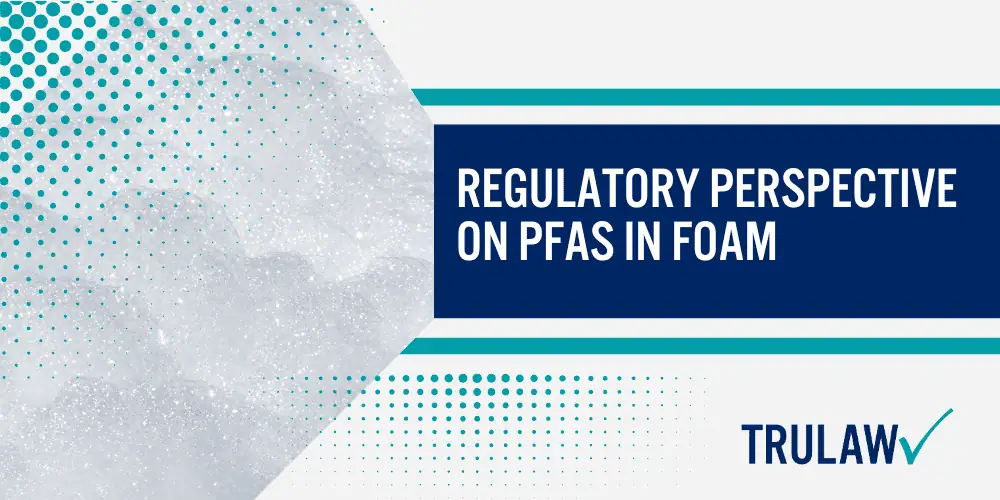
Various regulatory actions reflect attempts to manage and mitigate these concerns.
FAA Reauthorization Act Influence
The Federal Aviation Administration (FAA) regulates aviation firefighting foams.
The FAA Reauthorization Act of 2018 directed the FAA to ensure that airports shifted away from using foam-containing per- and Polyfluoroalkyl Substances (PFAS).
Key provisions include:
- Timeline for transition to PFAS-free foams.
- Funding support for testing and implementation.
- Environmental assessments, as mandated.
- Training programs for airport firefighting personnel.
These steps aim to address contamination issues and align airport operations with current environmental standards.
Global Regulations on PFAS Use
Internationally, several countries have instituted strict regulations to limit or ban PFAS in firefighting foams.
Leading regions include:
- European Union: Adopted stringent regulations requiring a phased ban on PFAS foams by 2022.
- Australia: Established guidelines to restrict PFAS use and promote safer alternatives.
- Canada: Issued advisories and regulations targeting PFAS foam endpoints.
- Japan: Implemented policies for the controlled use and eventual elimination of PFAS.
These initiatives underscore a global commitment to reducing PFAS contamination in firefighting environments.
Impact of PFAS on Fire Departments and Training
Switching to non-PFAS firefighting foams affects how fire departments operate and how firefighters train for fire suppression.
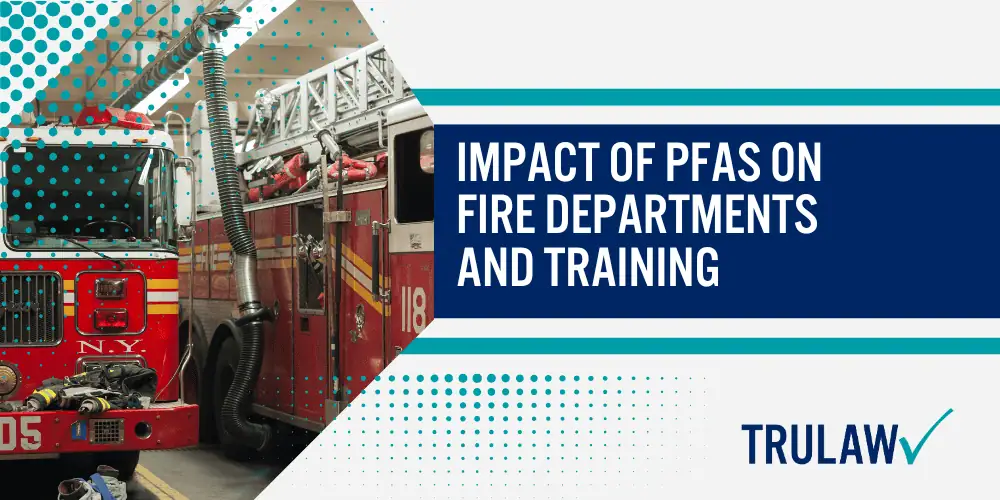
This change is driven by health concerns associated with PFAS chemicals.
Adapting to Non-PFAS Foams
Fire departments must adjust to non-PFAS foams to replace the traditional PFAS-containing products.
Here are some key considerations for making this transition:
- Equipment Compatibility: Not all existing equipment is suitable for non-PFAS foams. Fire departments may need to invest in new gear.
- Effectiveness: Non-PFAS foams might not extinguish fires as effectively, especially in flammable vapor suppression scenarios.
- Environmental Regulations: Non-PFAS foams must comply with local environmental regulations, which vary by region.
- Cost: Non-PFAS foams can be more expensive, impacting budgets for local fire departments.
- Transition Period: There is a period of adjustment as firefighters and departments get used to the new foams.
Training sessions should include these aspects to ensure smooth transitions.
Training for PFAS-Free Fire Suppression
Effective training programs are vital for using non-PFAS foams in fire suppression.
To ensure comprehensive and effective training, the following key components must be included:
- Revised Protocols: Training must cover revised fire suppression techniques that suit non-PFAS foams.
- Hands-On Practice: Firefighters require practical training to handle foam application and extinguishment strategies.
- Safety Procedures: Health and environmental safety education must be included due to the properties of new foams.
- Scenario-Based Drills: Realistic fire scenarios help firefighters adapt to non-PFAS foams in different types of fires.
- Continuous Learning: Ongoing training ensures that firefighters stay updated on best practices and new foam technologies.
This approach ensures firefighters are prepared and skilled in using environmentally friendly foams for effective fire suppression.
Identifying and Managing Legacy Foams
Legacy foams that contain PFAS chemicals need proper disposal and a careful transition to safer, PFAS-free alternatives to reduce environmental risks and protect the health of fire station personnel.
Disposal of PFAS-Containing Foams
Proper disposal of legacy foams containing PFAS chemicals is essential to prevent environmental contamination and health risks.
Most fire stations are shifting towards safer practices for managing these hazardous substances.
Disposing of PFAS-containing foams involves several steps:
- Collecting and storing old foam in secure containers.
- Consulting Safety Data Sheets (SDS) for specific disposal guidelines.
- Utilizing approved disposal facilities to ensure safe incineration or containment.
- Collaborating with environmental agencies for compliance with local and federal regulations.
- Regular training for fire station staff on handling and disposing of hazardous materials.
- Monitoring environmental impact in surrounding areas to detect any contamination early.
Transition to PFAS-Free Solutions
Fire stations are making efforts to transition to PFAS-free solutions to avoid the long-term risks associated with legacy foams.
The transition process is guided by efficiency, safety, and regulatory compliance.
Key steps in transitioning include:
- Identifying PFAS-free alternatives that meet firefighting standards and requirements.
- Training fire station personnel on how to use new foams effectively.
- Conducting pilot tests to evaluate the performance of PFAS-free foams in different scenarios.
- Funding and budgeting for new equipment and materials needed for the transition.
- Ensuring compatibility of storage and delivery systems with new PFAS-containing foam types.
- Staying updated on regulatory changes and advancements in firefighting technology.
Using these steps, fire stations can manage legacy foams responsibly and move towards safer, environmentally friendly practices.
Transition to Safer Alternatives
Efforts to phase out PFAS-containing firefighting foams have led to the development and testing of new, safer alternatives.
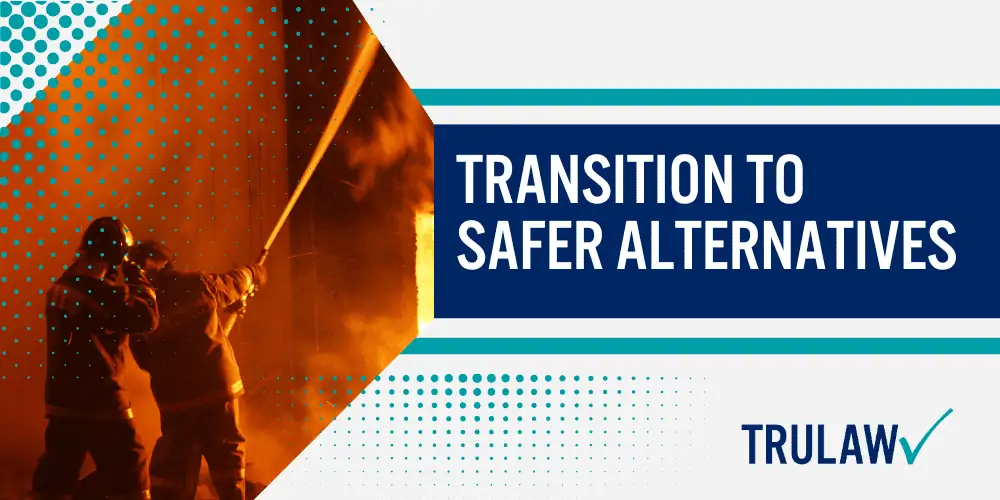
Key focuses include reducing environmental impact and ensuring effective fire suppression.
Exploring Fluorine-Free Formulations
Many manufacturers and agencies are shifting to fluorine-free foams to eliminate PFAS chemicals from their products.
These alternatives are designed to suppress fires effectively while being safer for the environment.
Key advancements include:
- Biodegradable Materials: These break down more easily, reducing environmental persistence.
- Non-toxic Additives: Minimizing harm to human health.
- Enhanced Performance: Ensuring the new foams can still tackle various types of fires, particularly those involving flammable liquids.
- Global Standards: Adopt international certifications to ensure safety and effectiveness.
Several organizations are conducting large-scale tests and evaluations to confirm these foams meet required safety and performance standards.
Safety and Performance of Alternatives
Testing the safety and performance of fluorine-free firefighting foams has been a major priority.
Ensuring these alternatives can match the efficacy of PFAS-based foams is critical.
Considerations in this process include:
- Heat Resistance: Ability to withstand high temperatures.
- Extinguishing Speed: How quickly the foam can put out a fire.
- Storage Stability: Shelf life and readiness for use without degradation.
- User Training: Ensuring firefighters are trained to use the new foams effectively.
The transition to fluorine-free alternatives is ongoing, involving substantial investment and rigorous testing.
Results so far are promising, with many new products proving effective while also being safer for the environment and human health.
Industry Involvement and Advancements
Foam manufacturers and researchers are working to find alternatives to PFAS-containing firefighting foams.

This includes developing new, safer foams that are effective in fighting fires without posing health risks.
Foam Manufacturers and PFAS
Foam manufacturers have traditionally used PFAS in their products due to its effectiveness in extinguishing fires, especially jet fuel fires.
Some prominent manufacturers include:
- 3M
- Chemguard
- Solberg Company
- Ansul
These companies have been at the forefront of producing Modern Fluorotelomer AFFF (Aqueous Film Forming Foam), which often contains fluorinated surfactants.
These surfactants are pivotal because they create a rapid film over the fuel, cutting off oxygen and quickly suppressing the fire.
However, due to health risks associated with PFAS, there is a push to develop alternatives.
Manufacturers are now investing in research to create foams that do not contain these harmful chemicals but still provide the needed firefighting capabilities.
Research and Development of Safe Foams
Researchers are actively working on developing PFAS-free alternatives.
Key efforts include:
- Testing new chemical mixtures to replace PFAS
- Developing additives that enhance firefighting capabilities
- Ensuring new foams meet regulatory requirements
For example, the Johns Hopkins Applied Physics Laboratory (APL) is assessing new compounds and additives.
Their goal is to find foams that are not only effective in extinguishing fires but are also safe for the environment and human health.
Different types of potential alternatives being studied include:
- Silicone-based foams
- Protein-based foams
- Synthetic foams
This research aims to provide a balance between fire suppression efficiency and environmental safety, ensuring the safety of both firefighters and nearby communities.
The transition is ongoing, as testing and validation of these new foams are crucial before widespread adoption.
AFFF Lawsuit Frequently Asked Questions
-
PFAS-containing firefighting foams are primarily Aqueous Film-Forming Foams (AFFF) for extinguishing flammable liquid fires.
PFAS, or per- and poly-fluoroalkyl substances, are synthetic chemicals in these foams that create a film to smother fires effectively.
However, their environmental persistence and health risks have raised significant concerns.
-
Fluorine-free foams are firefighting foams that do not contain PFAS chemicals.
These alternatives aim to provide effective fire suppression without the environmental and health risks associated with PFAS.
While they may have different chemical formulations, fluorine-free foams are designed to comply with new regulatory standards and reduce long-term contamination.
-
Class B firefighting foam is used to combat fires involving flammable liquids such as gasoline, oil, and jet fuel.
Aqueous film-forming foam (AFFF), a type of Class B foam, typically contains PFAS chemicals, which enhance its fire suppression capabilities.
However, due to the environmental and health impacts of PFAS, there is a growing shift towards using fluorine-free alternatives.
-
Recent advancements in firefighting foam formulations focus on developing fluorine-free alternatives that do not contain PFAS chemicals.
Researchers and manufacturers are testing new chemical mixtures, such as silicone-based, protein-based, and synthetic foams, to ensure effective fire suppression while being safer for the environment and human health.
These alternatives are rigorously tested to meet regulatory requirements and performance standards.
-
The phasing out of fluorinated foams, which contain PFAS chemicals, involves several steps.
Fire departments must identify fluorine-free alternatives, train personnel on their use, and ensure compatibility with existing equipment.
Challenges include the higher cost of non-PFAS foams, potential differences in fire suppression effectiveness, and the need for updated regulatory compliance.
Ongoing training and investment in new technology are critical to ensure a smooth transition and effective fire safety measures.

Managing Attorney & Owner
With over 25 years of legal experience, Jessica Paluch-Hoerman is an Illinois lawyer, a CPA, and a mother of three. She spent the first decade of her career working as an international tax attorney at Deloitte.
In 2009, Jessie co-founded her own law firm with her husband – which has scaled to over 30 employees since its conception.
In 2016, Jessie founded TruLaw, which allows her to collaborate with attorneys and legal experts across the United States on a daily basis. This hypervaluable network of experts is what enables her to share the most reliable, accurate, and up-to-date legal information with our readers!
Additional AFFF Lawsuit resources on our website:
Here, at TruLaw, we’re committed to helping victims get the justice they deserve.
Alongside our partner law firms, we have successfully collected over $3 Billion in verdicts and settlements on behalf of injured individuals.
Would you like our help?
At TruLaw, we fiercely combat corporations that endanger individuals’ well-being. If you’ve suffered injuries and believe these well-funded entities should be held accountable, we’re here for you.
With TruLaw, you gain access to successful and seasoned lawyers who maximize your chances of success. Our lawyers invest in you—they do not receive a dime until your lawsuit reaches a successful resolution!
AFFF Lawsuit claims are being filed against manufacturers of aqueous film-forming foam (AFFF), commonly used in firefighting.
Claims allege that companies such as 3M, DuPont, and Tyco Fire Products failed to adequately warn users about the potential dangers of AFFF exposure — including increased risks of various cancers and diseases.
Depo Provera Lawsuit claims are being filed by individuals who allege they developed meningioma (a type of brain tumor) after receiving Depo-Provera birth control injections.
A 2024 study found that women using Depo-Provera for at least 1 year are five times more likely to develop meningioma brain tumors compared to those not using the drug.
Suboxone Tooth Decay Lawsuit claims are being filed against Indivior, the manufacturer of Suboxone, a medication used to treat opioid addiction.
Claims allege that Indivior failed to adequately warn users about the potential dangers of severe tooth decay and dental injuries associated with Suboxone’s sublingual film version.
Social Media Harm Lawsuits are being filed against social media companies for allegedly causing mental health issues in children and teens.
Claims allege that companies like Meta, Google, ByteDance, and Snap designed addictive platforms that led to anxiety, depression, and other mental health issues without adequately warning users or parents.
Transvaginal Mesh Lawsuits are being filed against manufacturers of transvaginal mesh products used to treat pelvic organ prolapse (POP) and stress urinary incontinence (SUI).
Claims allege that companies like Ethicon, C.R. Bard, and Boston Scientific failed to adequately warn about potential dangers — including erosion, pain, and infection.
Bair Hugger Warming Blanket Lawsuits involve claims against 3M — alleging their surgical warming blankets caused severe infections and complications (particularly in hip and knee replacement surgeries).
Plaintiffs claim 3M failed to warn about potential risks — despite knowing about increased risk of deep joint infections since 2011.
Baby Formula NEC Lawsuit claims are being filed against manufacturers of cow’s milk-based baby formula products.
Claims allege that companies like Abbott Laboratories (Similac) and Mead Johnson & Company (Enfamil) failed to warn about the increased risk of necrotizing enterocolitis (NEC) in premature infants.
Here, at TruLaw, we’re committed to helping victims get the justice they deserve.
Alongside our partner law firms, we have successfully collected over $3 Billion in verdicts and settlements on behalf of injured individuals.
Would you like our help?
